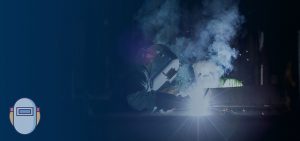What is a welding electrode?
Is there any difference between the electrode and the welding rod?
Why do you need each of them?
You are obliged to know the answers to these and many other questions in order to become a professional welder.
To do your job well and up to code, you have to know and practice different types of electrodes.
Besides, you must study all or almost all of the materials, methods, and conditions before you have started joining metals.
To bind metals, you should use different welding tools and equipment.
For instance, professional welders employ such an important welding tool as a welding machine or a welding gun.
Learn why you need electrodes and what they are in effect.
An Electrode in Essence
In order to join two metals, you have to use a material which is similar to the metals that you are welding.
A welding electrode is a coated metal wire.
It can be either used up and melted (like sticks in Shield Metal Arc Welding – SMAW) or the electrode can be non-consumable.
In the case of the second type, the electrodes do not usually melt when they weld like in Tungsten Inert Gas welding (TIG).
Simply put, the weld does not mix with the electrode.
Apart from the electrodes mentioned, some materials require a fed wire electrode which is peculiar to Gas Metal Arc (GMAW) or Metal Inert Gas welding (MIG).
In your welding career, you are also likely to come against the tubular electrode that contains a flux.
In fact, this type of electrodes is specific to Flux-Cored Arc Welding (FCAW or FCA).
The Meaning of Symbols
Do you know what application of welding should you use and how to operate it to get the best results?
As a matter of fact, you can consult a specific numbering system presented by the American Welding Society (AWS).
Consequently, a number (0 – 8) of the specific electrode will show you the coating type and welding current.
Numbers, Coating Types and Welding Currents
The zero (0) digit stands for High cellulose sodium coating type and DC+ welding current.
Then, number (1) means High cellulose potassium and AC, DC+ or DC-.
As follows, number (2) relates to High titania sodium and AC, DC-.
The three (3) digit stands for High titania potassium and AC, DC+ welding current.
After that, number (4) stands for Iron powder, titania, and AC, DC+ or DC-.
The five (5) digit stands for Low hydrogen sodium and DC+ welding current.
Afterward, number (6) means Low hydrogen potassium and AC, DC+ current.
The seven (7) digit stands for High iron oxide, potassium powder, and AC, DC+ or DC-.
The last one, number (8) means using Low hydrogen potassium, iron powder coating type, and AC, DC+ or DC- welding current.
The arc welding electrode is indicated with the letter “E”.
You can see either four or five digits in the number of the electrode which actually designates tensile strength.
If the number of the electrode is E10018, then the tensile strength of it is 100,000 PSI (pounds per square inch).
The E6010 means 60,000 PSI tensile strength.
The two digits that come last are the indicators of the coating type and welding current.
Besides, the next to last digits symbolize position (1 – all position electrode, 2 – flat and horizontal, 4 – flat, horizontal, vertical down and overhead electrode).
Choosing the Right Electrode
As a professional welder, you will be involved in different welding jobs during your career.
The crucial thing in the process of welding is choosing the right electrode.
Any particular outdoor or indoor welding job will require you to know the tensile strength and ductility, corrosion resistance and base metal, weld position and polarity, as well as welding current.
In addition to this, a welder must remember that light coated electrodes have their light coating being brushed, dipped, washed, sprayed, wiped or tumbled.
At the same time, the heavy coating (mineral, cellulose or both) in the heavy-coated electrodes is done via extrusion or dripping.
To weld cast iron, hard surfaces and steels, use heavy coated electrodes.
This page is also available in Spanish.










